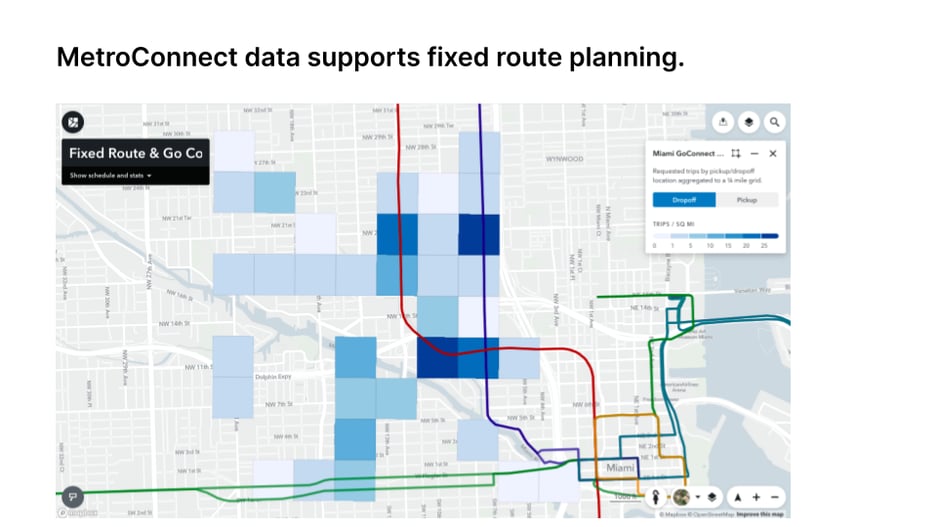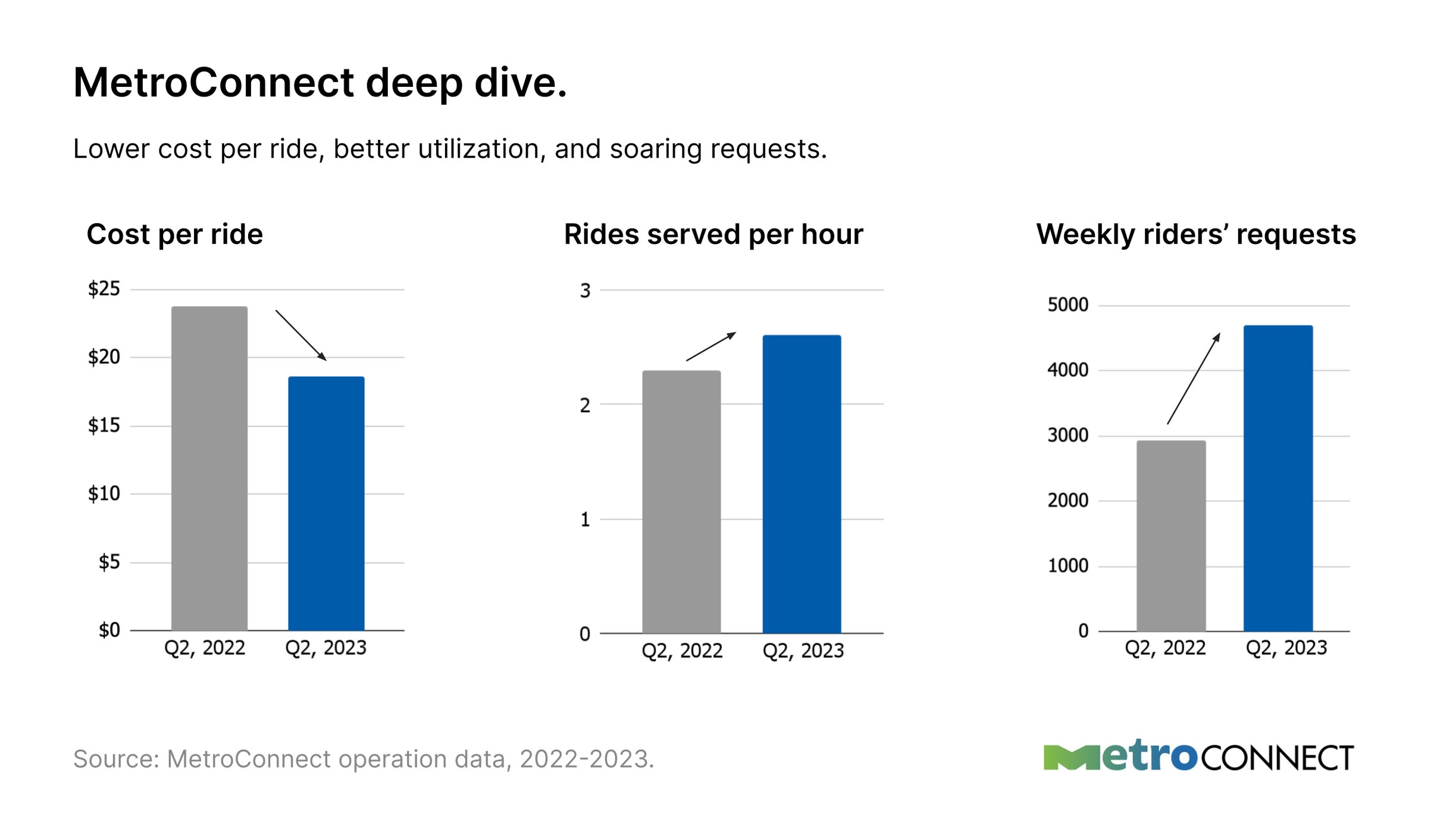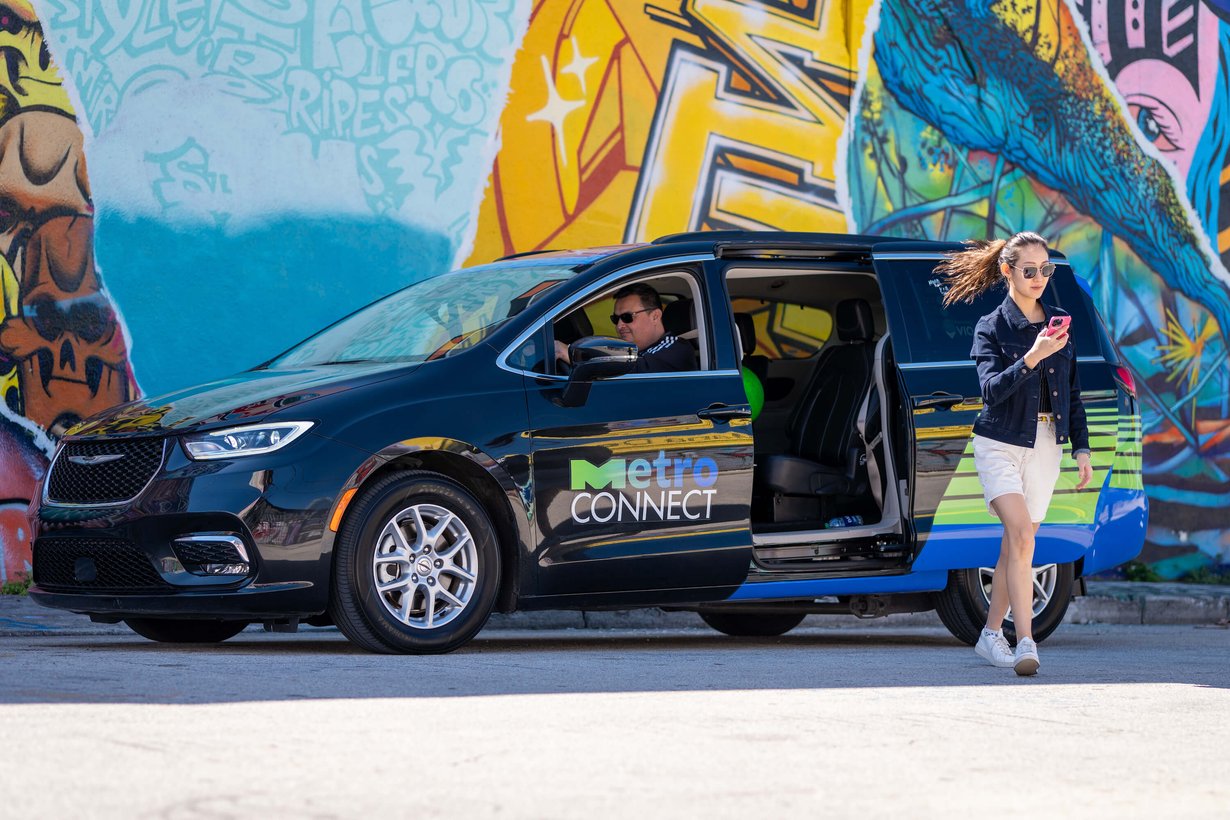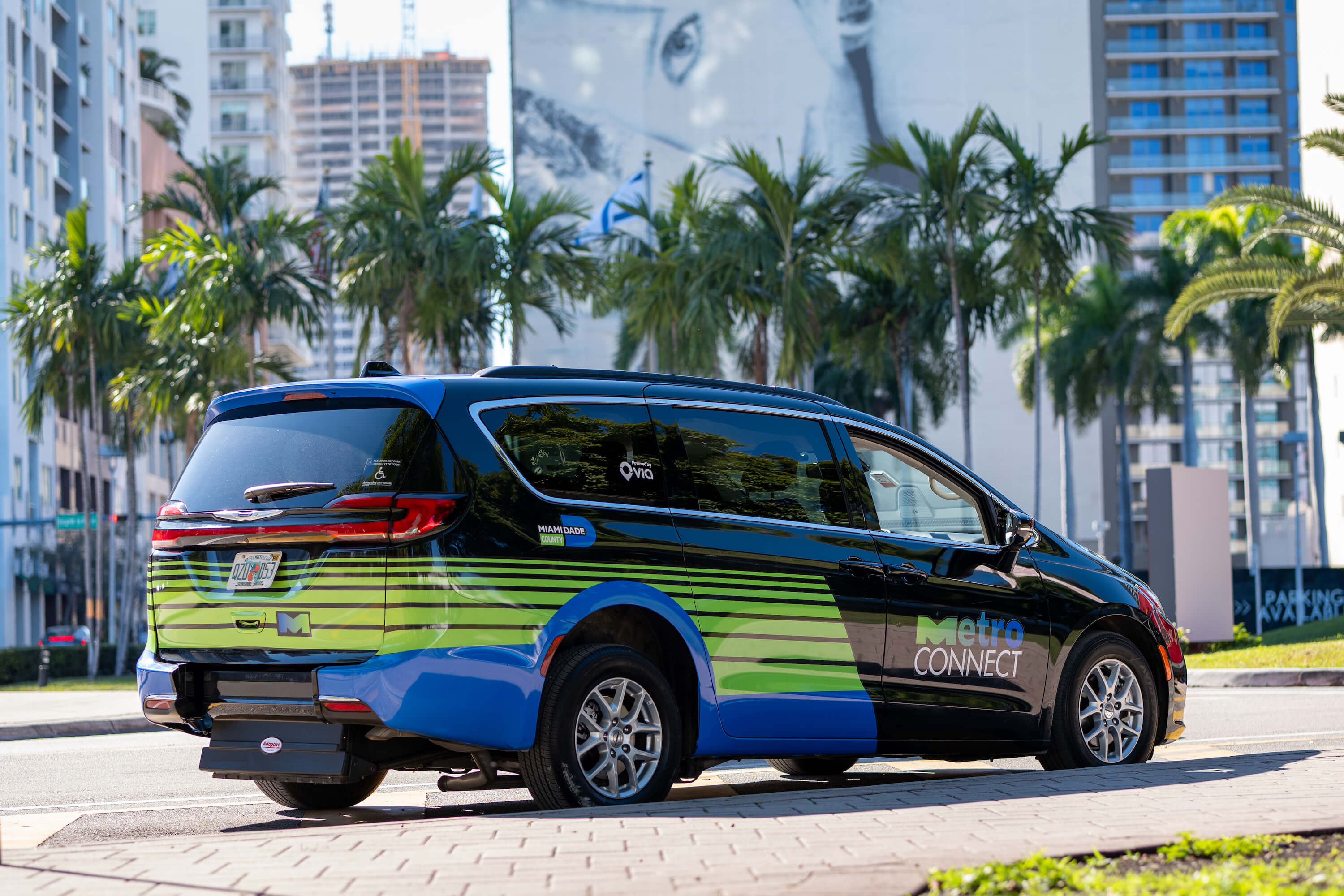First published in August 2023, updated in April 2024.
Picture this: you live in a bustling metro area with an extensive public transit network crisscrossing the city. Going about your day should be a breeze, right? Now imagine the nearest transit line is more than a quarter mile from your house or apartment. And don't forget about the blazing hot sun and frequent downpours.
Not so picture-perfect, after all.
Welcome to 2019 Miami-Dade County. Like so many other American cities, the sprawling South Florida county struggled with big gaps in its transit network, exacerbating the area's road congestion problem as travelers opted to drive personal cars and hail private rides. And for the 16 percent of residents living under the poverty line, private transportation is an added cost burden they likely can't afford.
How did Miami-Dade move toward a more connected future? By adding on-demand microtransit to the transit mix.
- 📖 Want to back up and learn more about Via's solutions? Click here.
- 💰 Want to dig deeper and learn how to save money with microtransit? Click here.
👇 Play the video and see how microtransit gets people to where they need to go.
MetroConnect comes on the scene.
In 2020, the county introduced GO Connect (recently rebranded as MetroConnect), an on-demand public transit service to fill the first- and last-mile gap. To build the program, the county partnered with Via, a TransitTech company powering microtransit services that cater to the unique needs of local communities. The service groups riders traveling in similar directions, reducing congestion, and is designed to be embedded into the county’s transit ecosystem, making multi-modal travel smoother and more seamless. Local residents can view trip proposals for both on-demand and fixed routes in a single county-branded transit app. Since day one, MetroConnect has been a game-changer for Miami-Dade County's transit landscape, enabling whole-network connectivity in a cost-effective manner. As many as 51% of riders reported using the service to connect to other forms of transit.

Ridership data for flexible mobility programs (as seen here in the ¼ mile squares) helps inform planners on the types of improvements needed in the fixed route system.
“Instead of having a four-mile fixed route with 20 bus stops, now we have a dynamic route with a hundred stops, which covers more people and helps connect them to opportunities,” says Carlos Cruz-Casas , Chief Innovation Officer at Miami-Dade County Department of Transportation and Public Works (DTPW).
Lower cost, better services.
As MetroConnect has expanded to meet growing community demands, the service is becoming even more efficient and financially sustainable.

Data reveals that as ridership grows over time, vehicle utilization also grows, bringing down the overall cost-per-ride. Cost per trip decreased by 22% in the spring of 2023, compared to the period last year, as the number of rides served per hour grew by 13%.
Meanwhile, quality of service stayed high. Rider ratings have been as high as 4.9 out of 5 during this period of growth. It’s clear MetroConnect is successfully filling transit gaps without sacrificing service quality or cost-effectiveness.
Easing congestion and emissions.
With more community members embracing this new type of mobility, the county has seen increased usage of public transportation, and a correspondingly reduced number of single-occupancy vehicles on roads.
Via’s Data Science team estimates that MetroConnect has played a crucial role in alleviating traffic congestion, reducing emissions, and promoting a greener transportation system. 47% of microtransit rides replace trips previously served by private vehicles , leading to 41% lower carbon emissions. And the hours of traffic delays are reduced by as much as 77%.
"Public transit should be redefined. Beyond just bus and rail, it should include everything else that connects people to opportunities."
— Carlos Cruz-Casas
Improving accessibility for all.
MetroConnect is all about improving accessibility, for everyone — commuters, children, seniors, and people with limited mobility or unique travel needs. With a dedicated fleet of 15 vehicles, which includes 5 wheelchair-accessible vehicles (WAVs), the service ensures that passengers with travel-limiting disabilities can move freely, car-free. Notably, the service receives an average of over 200 WAV ride requests each month, and 26% of riders reported to be 55+ years old. Even more importantly, WAV riders experience wait times that are nearly equivalent to non-WAV riders.
MetroConnect helps improve the reliability of the entire transit network, especially when disruption happens on other conventional services. For many riders with disabilities, it’s often their only alternative to move around when wheelchair-accessible elevators are down in their usual routes.
Looking ahead, Miami-Dade County plans to expand the service further, covering more neighborhoods and reaching even more residents. Local transit leaders envision a future where multi-modal travel is seamless and accessible across the county — and public on-demand service can help achieve just that. “Public transit should be redefined. Beyond just bus and rail, it should include everything else that connects people to opportunities. And this on-demand service is an important reason why Miami-Dade County is taking a big leap towards becoming a fully integrated, mobile space,” Cruz-Casas said.

Data Journalist





